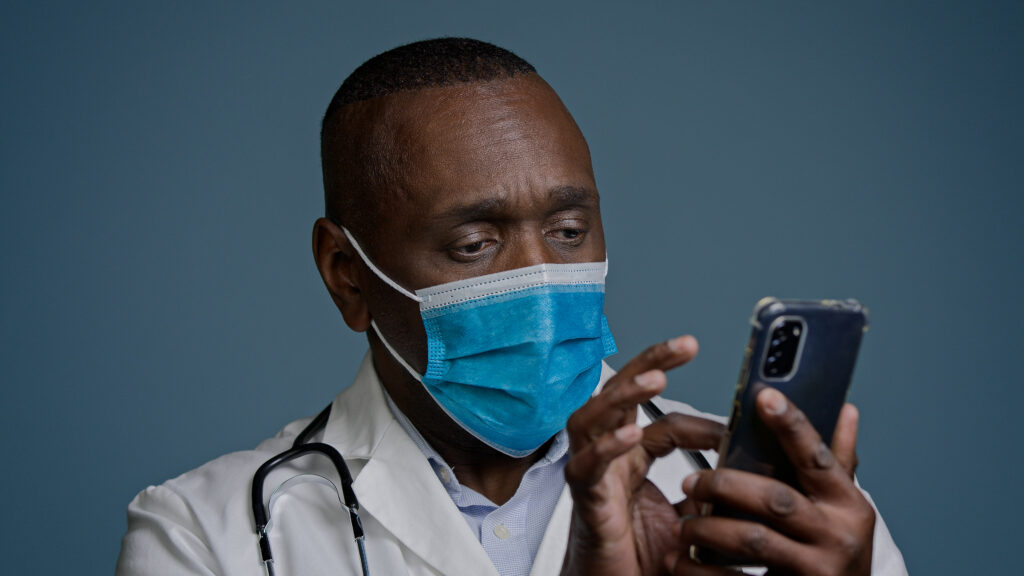
2026 Proposed Physician Fee Schedule: Good News on Direct Supervision
The Proposed Rule on the Medicare Physician Fee Schedule (MPFS) for the 2026 fiscal year is out, and if adopted, it’s got very good news

There seem to be variances, particularly regionally, regarding the use of the preadmission Hospital-Issued Notice of Non-coverage (HINN) and the Advance Beneficiary Notice of Non-coverage (ABN). Both notices serve essential roles in informing patients about potential non-coverage by Medicare, but they differ significantly in their application and implications, especially in the context of social admissions.
The regulations surrounding HINNs, particularly the preadmission HINN, were last revised as Version 508 in April 2012, before the implementation of the Two-Midnight Rule and the Medicare Outpatient Observation Notice (MOON) in October 2013. This historical context may explain why preadmission HINNs were once more commonly used and may still be used more frequently in certain regions.
A preadmission HINN is issued by hospitals when they determine that an admission is not medically necessary, is inappropriate, or is custodial in nature. The primary purpose of a preadmission HINN is to notify the patient that the hospital, typically the utilization review committee (URC), does not consider inpatient admission to meet the criteria for Medicare coverage. This occurs when the attending physician supports inpatient admission; however, there is concern that the inpatient admission may not be medically necessary, is inappropriate, or can be considered custodial care. This notice is issued before or at the time of admission. The hospital (URC) is not required to obtain concurrence from the patient or the attending physician before issuing a preadmission HINN. This also applies to direct admissions to swing beds and in situations in which the hospital determines that skilled nursing facility (SNF) services are not needed.
An ABN, on the other hand, serves a broader function. In the case of custodial care, there are nuances to recognize, particularly since ABNs are provided when the hospital intends to provide care in the outpatient setting. The ABN is intended to inform Medicare beneficiaries in advance that Medicare may not cover certain items or services. The notice allows healthcare providers to shift financial liability to the beneficiary if Medicare denies the claim. An ABN must be provided before the service is rendered, giving the beneficiary time to make an informed decision about whether to proceed.
ABNs are used in a wide range of scenarios, typically involving services that may be deemed not reasonable and necessary under Medicare guidelines (or considered custodial care).
When considering social admissions made primarily for non-medical reasons, such as convenience or social support, the differences between using an ABN and a preadmission HINN become particularly relevant. The preadmission HINN focuses on the hospital’s assessment that the inpatient admission does not meet Medicare’s criteria for medical necessity or appropriateness. This notice serves to inform the beneficiary of their right to appeal to their Quality Improvement Organization (QIO) should they disagree with this decision.
The QIO will either concur with the member or the hospital on the medical necessity of the inpatient status. Should the QIO side with the hospital, the patient is financially liable for their Part A services.
If the hospital instead provides the patient with an ABN, the hospital is making a decision to keep the patient in an outpatient designation. The patient must provide a signature of acknowledgement prior to the services, if the hospital intends to bill the patient for any outpatient services that may be rendered while bedded.
Reviewing the use of the preadmission HINN, it appears to be most common in the Northeast, specifically New York. According to Livanta’s 2023 annual report, Region 2, which includes New York, New Jersey, Puerto Rico, and the Virgin Islands, reviewed the preadmission HINN 174 times, with an 81-percent concurrence rate with the hospital. The breakdown is interesting: 167 HINNs were given in New York, while only seven were given in New Jersey, and none in Puerto Rico and the Virgin Islands. In fact, New York last year provided significantly more notices than any other region. In Region 3 (Maryland, Delaware, Pennsylvania, and Virginia), this preadmission HINN was reviewed seven times by Livanta. In Region 5 (Illinois, Indiana, Michigan, Minnesota, Ohio, and Wisconsin), it was reviewed a total of six times, and in Region 7 (Iowa, Kansas, Missouri, and Nebraska), it was reviewed once in the entire year. The trends were similar in Acentra Health’s (formerly Kepro’s) annual reports for 2023. The highest number of preadmission HINNs, at 22, was found in Region 1 (Connecticut, Maine, Massachusetts, New Hampshire, Rhode Island, and Vermont).
This disparity suggests that New York hospital policies pertaining to utilization review seem to define the delivery of a preadmission HINN as the standard of practice for social admissions, with a decision to place patients in inpatient care, while other hospitals across the country are either not providing the preadmission HINN appropriately or choosing up front to keep patients in an outpatient designation.
In writing this article, I reached out to the Centers for Medicare & Medicaid Services (CMS) for clarification on why certain hospitals use the preadmission HINN versus the ABN for social admissions. I requested that the instructions for the HINNs be updated to reflect more current standards of practice, given that they are over 10 years old.
The response I received stated: “Thank you for your suggestion to clarify. We will take this into consideration with the next manual change.” One can only hope!


The Proposed Rule on the Medicare Physician Fee Schedule (MPFS) for the 2026 fiscal year is out, and if adopted, it’s got very good news

Because so many investigations are trigged by situations where people think a violation of company policy is a violation of the law, I want to
Please log in to your account to comment on this article.

Only ICD10monitor delivers what you need: updates on must-know changes associated with the FY26 IPPS, including new ICD-10-CM/PCS codes, CCs/MCCs, and MS-DRGs, plus insights, analysis and answers to your questions from two of the country’s most respected subject matter experts.

This third session in our 2026 IPPS Masterclass will feature a review of FY26 changes to the MS-DRG methodology and new technology add-on payments (NTAPs), presented by nationally recognized ICD-10 coding expert Christine Geiger, MA, RHIA, CCS, CRC, with bonus insights and analysis from Dr. James Kennedy.

This second session in our 2026 IPPS Masterclass will feature a review the FY26 changes to ICD-10-PCS codes. This information will be presented by nationally recognized ICD-10 coding expert Christine Geiger, MA, RHIA, CCS, CRC, with bonus insights and analysis from Dr. James Kennedy.

This first session in our 2026 IPPS Masterclass will feature an in-depth explanation of FY26 changes to ICD-10-CM codes and guidelines, CCs/MCCs, and revisions to the MCE, presented by presented by nationally recognized ICD-10 coding expert Christine Geiger, MA, RHIA, CCS, CRC, with bonus insights and analysis from Dr. James Kennedy.

RACmonitor is proud to welcome back Dr. Ronald Hirsch, one of his most requested webcasts. In this highly anticipated session, Dr. Hirsch will break down the complex Two Midnight Rule Medicare regulations, translating them into clear, actionable guidance. He’ll walk you through the basics of the rule, offer expert interpretation, and apply the rule to real-world clinical scenarios—so you leave with greater clarity, confidence, and the tools to ensure compliance.

Bring your questions and join the conversation during this open forum series, live every Wednesday at 10 a.m. EST from June 11–July 30. Hosted by Chuck Buck, these fast-paced 30-minute sessions connect you directly with top healthcare experts tackling today’s most urgent compliance and policy issues.

Fraud convictions don’t just punish a few bad claims; they can wipe out years of reimbursements. Don’t wait for an audit to learn the rules. Join Frank Cohen, MPA, for a live Q&A on spotting red flags, avoiding liability, and protecting your practice. Register now and bring your questions!

Substance abuse is everywhere. It’s a complicated diagnosis with wide-ranging implications well beyond acute care. The face of addiction continues to change so it’s important to remember not just the addict but the spectrum of extended victims and the other social determinants and legal ramifications. Join John K. Hall, MD, JD, MBA, FCLM, FRCPC, for a critical Q&A on navigating substance abuse in 2025. Register today and be a part of the conversation!
Prepare for the 2025 CMS IPPS Final Rule with ICD10monitor’s IPPSPalooza! Click HERE to learn more
Get 15% OFF on all educational webcasts at ICD10monitor with code JULYFOURTH24 until July 4, 2024—start learning today!
CYBER WEEK IS HERE! Don’t miss your chance to get 20% off now until Dec. 2 with code CYBER24